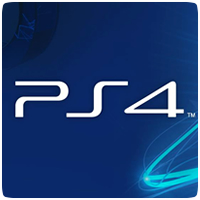In a brand new interview with Sony’s Mark Cerny, the man who designed the hardware and functionality of the PS4, has revealed new information about the console, including the motivation behind removing backwards compatibility and using the new UI at 4K resolution. The interview’s in Japanese, but translations exist, though we cannot verify all the facts. We’ve summarised the main points below.
New PS4 Information:
- Backwards compatibility has been dropped to make sure developers move to a more “versatile” platform. It’s also difficult to emulate the behaviour of the CELL Broadband Engine that powers the PS3 through software, but Sony hasn’t completely ruled out the functionality.
- The console will be able to support 4K, but will focus on 1080p gaming. The OS UI can be rendered in 4K, while rendering games in 1080p. Having the OS UI output in 4K would take 10 GB/s, so ever more resources will be needed to output games in 4K resolution.
- The PS4 won’t support playback of Audio CDs, but will be able to read CD disks. This could mean the console may be capable of running PSOne games, though this is currently speculation.
- A custom CPU will monitor all I/O, processes and downloads on the system, even when the power is off. The main reason for a secondary low-power chip was to comply with EU regulations on power consumption.
- When downloading a game, the initial download will be small, allowing you to play the game sooner, while the rest of the game downloads in the background.
- As with the PS3, the Blu-ray drive and Hard Drive will be used together to cut down load times.
- The PS4 will have hardware-based audio and video compression / decompression reducing overheads. It means that Remote Play can be supported on most PS4 titles with “almost no overhead, without pain whatsoever.” Only games that require the PS4 specific features, the PlayStation Move or the new PlayStation Camera cannot be played via Remote Play.
- Not all of the features mentioned by Sony will be available on the PS4 from Day One. Like the PS3, new features will be added overtime via Firmware Updates.
- The OS is BSD-based, so they can make full use of multi-tasking.
